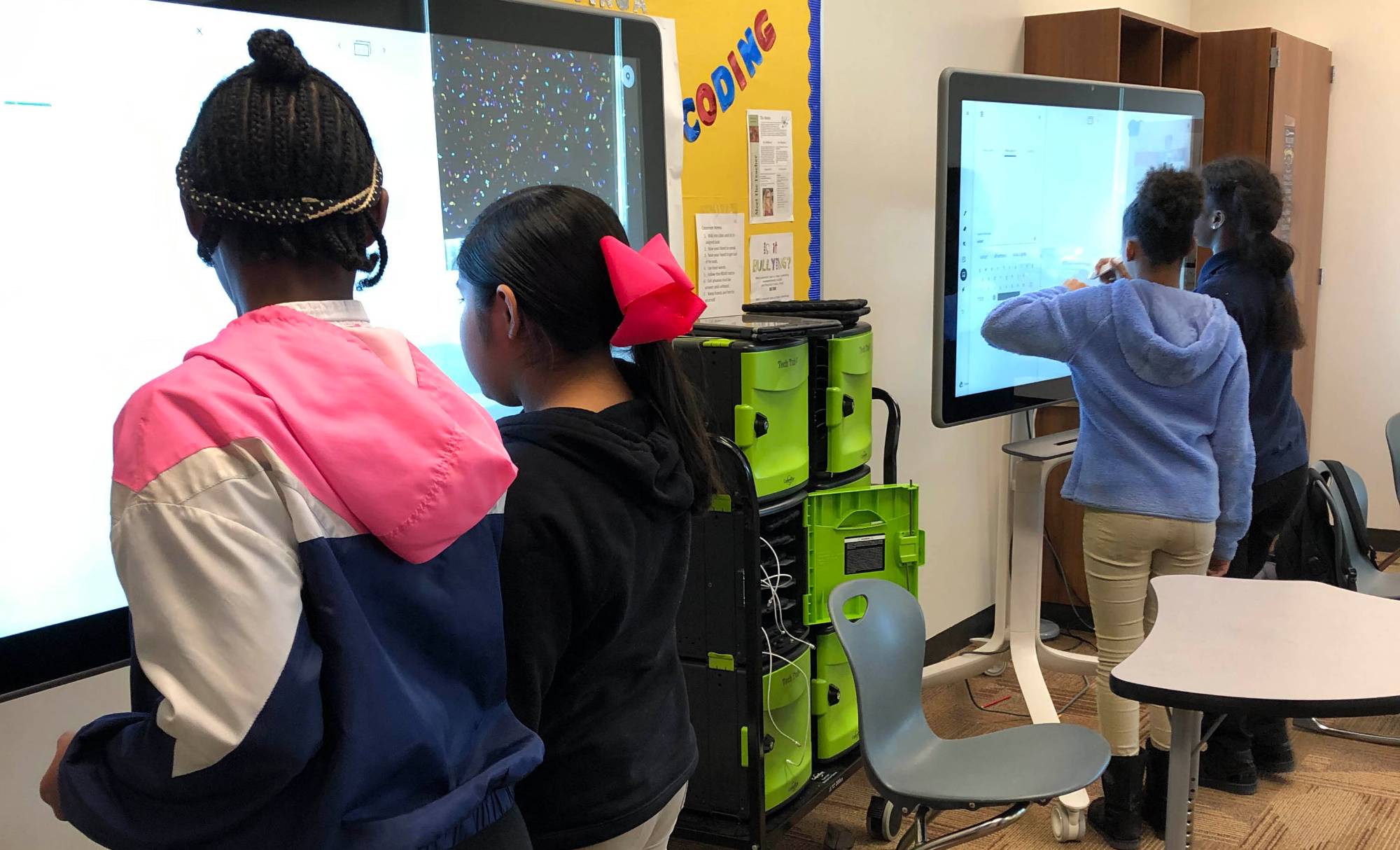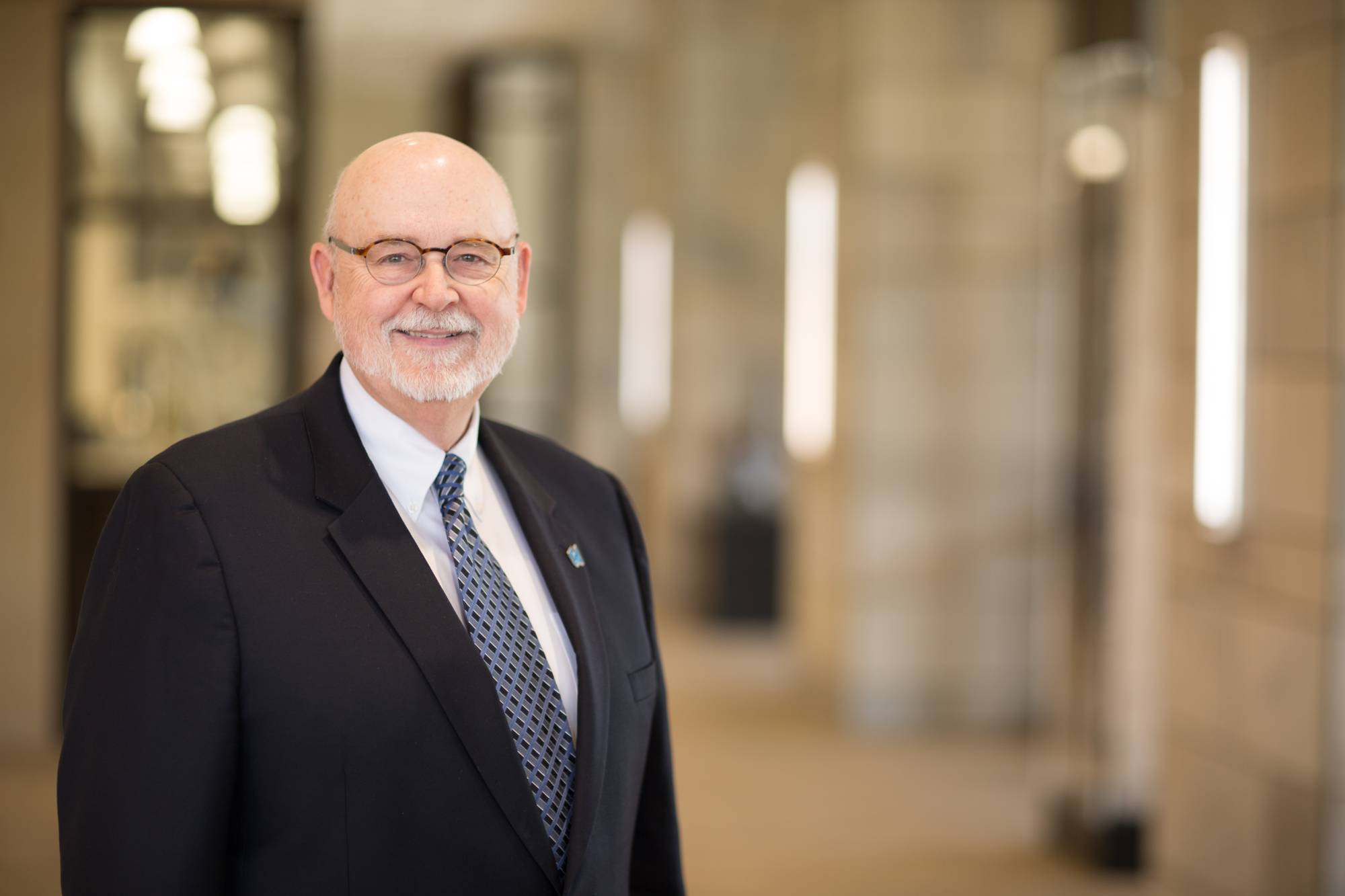CLAS Acts March 2020
Monthly newsletter of the TT Faculty of CLAS

The Most Challenging and Most Fun Curricular Work of a Cutting-Edge Battle Creek Classroom
On the desk of Professor Amy Masko (English) sits a mugꟷa gift from a studentꟷproclaiming, “I’m a teacher. What’s your superpower?”
The recent $15M Kellogg Foundation grant for which Jean Nagelkerk (Vice Provost for Health) and Paula Lancaster (College of Education) are principle investigators has opened the door for some fascinating curricular experiments in Battle Creek. Amy took on the role of mentoring three years of curriculum development and implementation to embed best practices, research-based pedagogy, and increased teacher capacity at the STEM Innovation Center, a Battle Creek middle school (grades 6-8).
The students are diverse, and the class size is about 24 students in each of the three classes. Amy is hopeful that this will become a great place for our student teachers to be placed.
“There are quite a few initiatives,” Amy explains. “There's a teacher mentor program; teachers get some graduate credit opportunities. I got involved in this project through our Regional Math and Science Center. Kris Pachla [Director of the RMSC] manages the STEM school part of the grant. Mathematics faculty Paul Yu and Lisa Kasmer, science faculty Janet Vigna (BIO/Integrated Science) and Julie Henderleiter (CHM/Integrated Science) are also involved. We work with three Battle Creek teachers in science, math, English language arts, and social studies. They also are quickly learning to teach coding, STEM, and engineering projects in problem-solving. My role is to support the ELA/Social Studies teacher in particular.”
Amy calls this the most challenging work because it involves starting a school and writing all of the curriculum with teachers on the go—but she notes that it is also the most fun.
“There are four to five units per grade level, which are thematic with a project or a problem guiding each unit. We just finished the last eight lessons and I wanted to teach them! It’s so exciting what the students will be learning. I’ll go down to Battle Creek once or twice a unit [an hour-and-a-half drive].”
The interdisciplinary lens of this math, science, engineering, social studies and language arts has proved to be a lot of fun. Coding has been part of the instruction every day and the STEM class has built skills the students will use in their project/problem-based assignments.
“The students tackle big questions such as “Is the electoral college a good thing or not?” and look at how census data matters, or they look at climate change impacting populations and migrations, or they take on a transport engineering topic about moving people. They make their choices and then work in groups to identify their audience, make their plan, and express their outcomes in ways such as a TED talk-style video or a poster presentation.”
A depth of knowledge is attained in these themed units. For instance, a unit designed around the idea of movement has a project on the census. Students “build” a city using real statistics. They use “coins” to represent costs which are tied to population. They see the tradeoffs between competing needs for infrastructure such as hospitals, police stations, etc. In math, they graph these challenges. In science, they look at how climate change impacts movement of people, which impacts where people live, and hence how many hospitals, schools, and police stations a community might need. The interdisciplinary connections are deep.
Amy is in awe of the tech that they have to work with. Jamboards, an interactive whiteboard developed by Google, are connected to their Chromebooks, so students can easily project their work up on the big screens as they work in groups. “It is some of the best tech in schools in the country,” Amy explains.
The three-year project to build this cutting-edge curriculum and implement it is accompanied by one-on-one support of the teachers. For instance, Amy speaks with the social studies teacher weekly. “In three years, she’ll be on her own. She’ll get completely away from the shrink-wrapped curriculum that has become ubiquitous. She and I and the rest of the team are building her curriculum from scratch. The teachers are challenged in this process because they like to have all their lessons done up front, but we have scrapped the old stuff and are making a place-based curriculum with relevance to Battle Creek. For instance, they’re looking at The Bottoms, a local neighborhood that has historically experienced flooding, they are looking at the history of Battle Creek, and they are doing it in a connected, integrated approach. This year we concentrate on the 6th grade, then we move on to 7th and then 8th. We are thinking about how all this connects around the broad themes. It’s really fantastic.”
Students who go through this program will have the opportunity to go on to high school at Battle Creek Central (where there are the Health Academies, a part of the other WKKF/GVSU work) or the Battle Creek Area Math and Science Center.
Amy has high praise for the principal Susan Basso, the three teachers, the secretaries, engineering consultant and paraprofessionals who are essential to the work. GVSU contributed two student employees as part of the grant. Ashly Latham, an English Language Arts student and mathematics major, Devan Washington, contribute about 150 hours of work per semester to the project.
“They help us align with the standards in all the units so that none are missed.,” Amy explains. “They are learning a lot.”
Meanwhile, Amy is able to contribute to the professional development of the teachers by offering workshops on topics such as literature circles (like a structured book club which encourages rigorous discussion).
Students at Grand Valley will benefit from the exciting case studies that these classrooms represent. This grand experiment will help them rethink the integration of language arts in the curriculum and allow for richer future collaborations with many benefits from co-development of curriculum that has a multicultural, social justice lens.

FROM THE DEAN’S DESK
“Adaptability to change is itself a hallmark of successful education.”
~Peter Hilton, British mathematician noted for contributions to code-breaking during WW II
I was struck the other day by Nature’s willingness, even in implacable winter, to change (please excuse the anthropomorphism) and how we should be, too. Just as we cultivate students who are able to look beyond the assumptions and experiences of their generation, we admire people who aren’t too stuck in the past era that might be thought their heyday. Change is awkward, painful, disruptive to what we’ve learned to live with, but it can bring good things--something to think about this month when, out of the corner of your eye, you notice what might be shoots of new growth. The occasional snow flurry notwithstanding, signs of spring are emerging.
First, thank you for your attention to all the very important things that February brought. Some were just the usual annual challenges and some were key to the future of the college. Thank you for representing us.
I wish you a very happy Spring Break. When you return there will be some compelling programming that I urge you to attend. Out of the Box is addressing your need to be First Responders within the university on many fronts. Please register for that ASAP. The final Faculty Research Colloquium of the academic year is on March 12. You owe it to yourself to see how stimulating it is to hear about the research of our faculty across the disciplines. There are events in medical ethics, decision-making, a language festival and more. This richness is a testament to our college and our colleagues—and a really fun part of our individual lifelong learning. Seeing their professors in attendance is a boost to our students like no other.
And, no fooling, April 1 from 11:00 a.m. to 2:00 p.m. will be our Sabbatical Showcase and my final college meeting as Dean. Be sure that that unerring sign of Spring is on your calendar.
Thanks for your dedication and inspiration. The sun is shining while I write this, and I’m sure there is more to come.

Mark Your Calendars!
OUT OF THE BOX presents Faculty as ‘First Responders’: Support Resources for Student Retention and Success
Tuesday, March 10. KC Rm. 2204, 1 - 2:30 p.m.
Wednesday, March 11. KC Rm. 2270, 1 – 2:30 p.m.
This year, Out of the Box presents two panels that will address student retention and success. The program will include information about the Student Success Network, academic coaching, adult learners, food insecurity on campus, encouraging students to seek proactive support, faculty advising strategies, and first-generation students.
Short presentations by GVSU staff will precede Q & A/discussion. Faculty may attend one or both panels. Registration is on the OOTB webpage.
Desserts and beverages will be provided.
